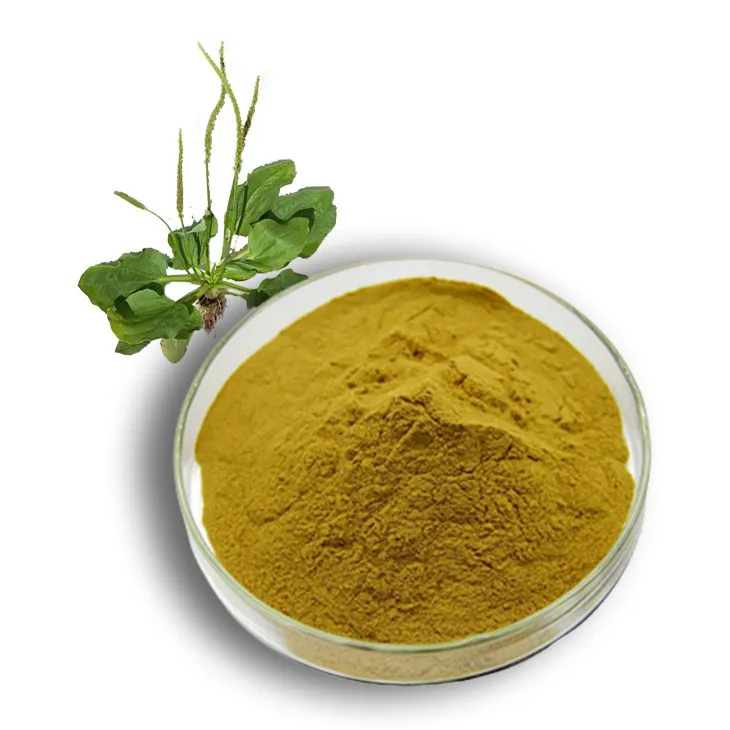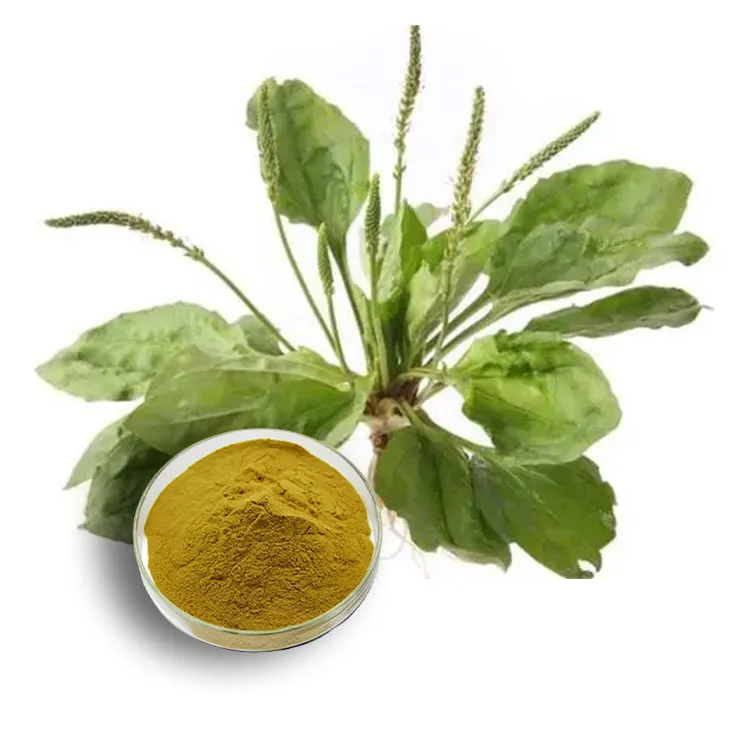- 0086-571-85302990
- sales@greenskybio.com
Complete Guide to Plantain Extract Grinding Process: Step - by - Step Key Points
2024-12-21

1. Introduction to Plantain extract
Plantain extract has been gaining significant attention in various fields, including medicine, cosmetics, and food industries. Plantain is a common plant known for its potential health benefits and versatile applications. The extraction process, particularly the grinding step, is crucial in obtaining high - quality Plantain extract. This article aims to provide a comprehensive guide on the plantain extract grinding process, covering all the essential aspects from start to finish.

2. Pre - Grinding Preparation
2.1. Selection of Plantain
The first step in the plantain extract grinding process is the careful selection of plantain. It is important to choose healthy, mature plantains. Look for plantains that are free from diseases, pests, and any signs of physical damage. Different species of plantain may have slightly different characteristics, so it is essential to know the specific type required for the desired extract. For example, in medicinal applications, certain species may be more suitable due to their higher concentration of active compounds.
2.2. Cleaning
Once the plantains are selected, thorough cleaning is necessary. Use clean water to wash the plantains gently, removing any dirt, debris, or other contaminants that may be present on the surface. This step is crucial as any impurities left on the plantains can affect the quality of the extract. After washing, allow the plantains to dry completely. This can be done either by air - drying in a clean, well - ventilated area or by using a gentle drying method such as a low - heat dryer.
2.3. Preparation of Equipment
Before starting the grinding process, ensure that all the equipment is clean, in good working condition, and suitable for the task. The main equipment required for grinding plantain extract is a grinder. There are different types of grinders available, such as mortar and pestle for small - scale or traditional grinding, and electric grinders for larger - scale operations. If using an electric grinder, make sure it is calibrated correctly and that the blades are sharp. Additionally, have all the necessary accessories such as containers for collecting the ground plantain, spatulas for handling the material, and cleaning tools for maintaining the equipment during and after the process.

3. The Grinding Process
3.1. Grinding Method Selection
Depending on the scale of production and the desired fineness of the extract, different grinding methods can be chosen. For small - scale or home - based extraction, a mortar and pestle can be used. This method allows for more control over the grinding process and is suitable for obtaining a relatively coarse grind. However, for commercial or large - scale production, electric grinders are more efficient. They can produce a finer grind in a shorter amount of time. When using an electric grinder, it is important to follow the manufacturer's instructions carefully to ensure proper operation and safety.
3.2. Grinding in Stages
Whether using a mortar and pestle or an electric grinder, it is advisable to grind the plantain in stages. Start with larger pieces of plantain and gradually grind them into smaller particles. This helps in achieving a more uniform grind and also prevents over - grinding, which can lead to the loss of some of the active compounds. For example, if using a mortar and pestle, first break the dried plantain into smaller chunks using gentle pressure. Then, gradually grind these chunks into a powder - like consistency. With an electric grinder, start with a lower speed setting for the initial grinding and then increase the speed as the plantain becomes finer.
3.3. Monitoring the Grinding Process
During the grinding process, it is crucial to monitor the progress continuously. Check the texture and fineness of the ground plantain regularly. If using a mortar and pestle, you can feel the consistency of the grind by hand. For electric grinders, some models have viewing windows that allow you to observe the grinding process. The goal is to achieve a consistent grind throughout. If you notice any lumps or unevenness, adjust the grinding method or continue grinding until the desired consistency is reached. Additionally, pay attention to any signs of overheating, especially with electric grinders. Overheating can cause damage to the equipment and also affect the quality of the extract.

4. Post - Grinding Considerations
4.1. Collection and Storage of the Ground Plantain
Once the grinding process is complete, carefully collect the ground plantain. Use a clean spatula or other suitable tool to transfer the ground material into a clean, airtight container. This helps in preserving the freshness and quality of the plantain extract. Label the container with the date of grinding and any other relevant information such as the source of the plantain and the grinding method used. Store the container in a cool, dry place away from direct sunlight. This will prevent the degradation of the active compounds in the plantain extract over time.
4.2. Quality Control
After grinding, it is important to perform quality control checks on the ground plantain. This can include testing for the presence of contaminants, checking the fineness of the grind, and analyzing the chemical composition of the extract. Simple tests such as visual inspection for any foreign particles and sieve analysis to determine the particle size distribution can be carried out. For more in - depth analysis, advanced laboratory techniques may be required. Quality control ensures that the plantain extract meets the desired standards for its intended application, whether it is for medicinal, cosmetic, or food purposes.
4.3. Further Processing
In many cases, the ground plantain may need to undergo further processing to obtain the final plantain extract. This can involve extraction using solvents, filtration, and purification steps. The ground plantain can be mixed with a suitable solvent, such as ethanol or water, depending on the nature of the active compounds to be extracted. After extraction, the mixture is filtered to remove any solid residues, and then purification steps may be carried out to obtain a pure and concentrated plantain extract. These further processing steps are essential for obtaining a high - quality plantain extract with the desired properties.
5. Safety Precautions during the Grinding Process
When grinding plantain extract, certain safety precautions must be taken. If using an electric grinder, always unplug the device when not in use and keep your fingers away from the blades during operation. Wear appropriate safety gear such as gloves to protect your hands from any potential injuries. When handling the plantain, be aware of any possible allergic reactions. Although plantain is generally safe, some individuals may be allergic to it. In case of any irritation or allergic symptoms, stop the process immediately and seek medical advice. Additionally, ensure that the work area is clean and well - ventilated to avoid inhaling any dust particles generated during the grinding process.
6. Conclusion
The grinding process of plantain extract is a multi - step and crucial part of obtaining a high - quality product. From the initial selection and preparation of plantain to the post - grinding considerations, each step plays an important role. By following the steps and key points outlined in this guide, one can ensure a successful plantain extract grinding process, whether for personal use, small - scale production, or commercial applications. With the increasing demand for plantain extract in various industries, understanding and mastering this process is becoming more and more important.
FAQ:
Question 1: What are the initial steps in the plantain extract grinding process?
The initial steps in the plantain extract grinding process typically involve harvesting fresh plantain leaves or other plant parts rich in the desired compounds. These are then carefully washed to remove any dirt, debris, or contaminants. After that, they may need to be dried partially or fully depending on the specific extraction method. This initial preparation ensures that the plant material is in the best state for the subsequent grinding process.
Question 2: What equipment is commonly used for grinding plantain extract?
Commonly, a mortar and pestle can be used for small - scale grinding, especially in more traditional or laboratory - scale operations. For larger - scale production, mechanical grinders such as blade grinders or burr grinders are often employed. These types of grinders can effectively break down the plantain material into a fine powder or pulp, which is necessary for the extraction of the active compounds in the extract.
Question 3: How fine should the plantain material be ground for optimal extraction?
The fineness of the ground plantain material for optimal extraction depends on various factors. In general, a finer grind is better as it increases the surface area of the plant material. This allows for better contact with the extraction solvent, whether it is water, alcohol, or another solvent. However, if the grind is too fine, it may cause issues such as clogging during filtration. A typical goal is to achieve a powder or pulp with a relatively uniform particle size that is small enough to ensure efficient extraction but not so small as to create handling problems.
Question 4: Are there any safety precautions to consider during the grinding process?
Yes, there are several safety precautions. When using mechanical grinders, ensure that the equipment is properly maintained and that all safety guards are in place. Workers should wear appropriate protective gear such as gloves and safety glasses to protect against any flying debris. Also, if using solvents during or after grinding, ensure proper ventilation to avoid inhalation of fumes. Additionally, when handling plantain material, be aware of any potential allergens or irritants it may contain.
Question 5: How does the grinding process affect the quality of the plantain extract?
The grinding process has a significant impact on the quality of the plantain extract. A proper grinding process that results in a fine and uniform particle size promotes better extraction efficiency. This means that more of the active compounds in the plantain can be extracted. If the grinding is not done correctly, for example, if the particle size is too large, the extraction may be incomplete, leading to a lower - quality extract with less of the desired bioactive components. On the other hand, if the grinding is too aggressive and damages the compounds, it can also affect the quality of the extract.
Related literature
- The Science of Plantain Extract: From Harvest to Utilization"
- "Advanced Techniques in Plantain Extract Processing"
- "Optimal Methods for Extracting Bioactive Compounds from Plantain"
- ▶ Hesperidin
- ▶ Citrus Bioflavonoids
- ▶ Plant Extract
- ▶ lycopene
- ▶ Diosmin
- ▶ Grape seed extract
- ▶ Sea buckthorn Juice Powder
- ▶ Fruit Juice Powder
- ▶ Hops Extract
- ▶ Artichoke Extract
- ▶ Mushroom extract
- ▶ Astaxanthin
- ▶ Green Tea Extract
- ▶ Curcumin
- ▶ Horse Chestnut Extract
- ▶ Other Product
- ▶ Boswellia Serrata Extract
- ▶ Resveratrol
- ▶ Marigold Extract
- ▶ Grape Leaf Extract
- ▶ New Product
- ▶ Aminolevulinic acid
- ▶ Cranberry Extract
- ▶ Red Yeast Rice
- ▶ Red Wine Extract
-
White Peony Extract
2024-12-21
-
Pomegranate Extract
2024-12-21
-
Licorice Root Extract Powder
2024-12-21
-
Lily extract
2024-12-21
-
Acerola Juice Powder
2024-12-21
-
Motherwort Extract
2024-12-21
-
Lotus leaf extract
2024-12-21
-
Thunder God Vine Extract
2024-12-21
-
Grape Leaf Extract
2024-12-21
-
Acerola Extract
2024-12-21





















